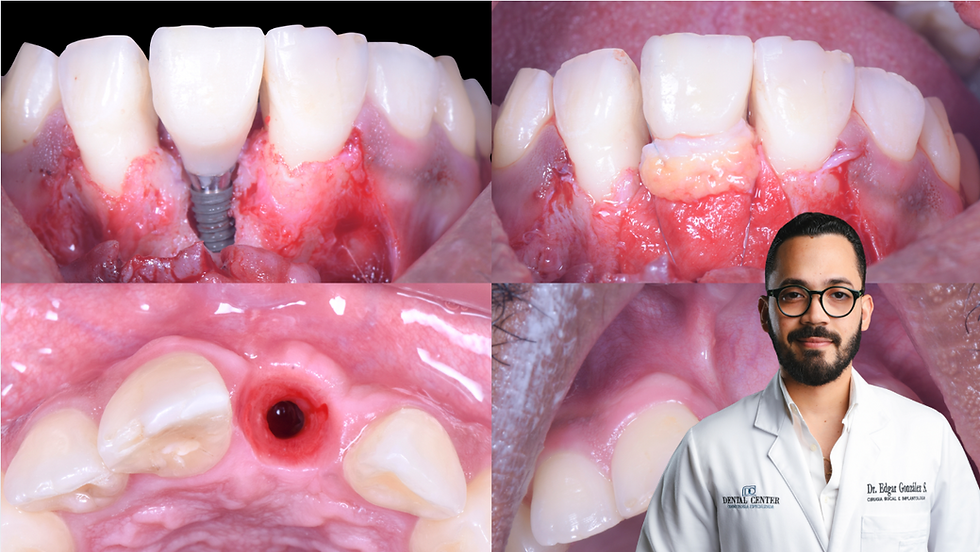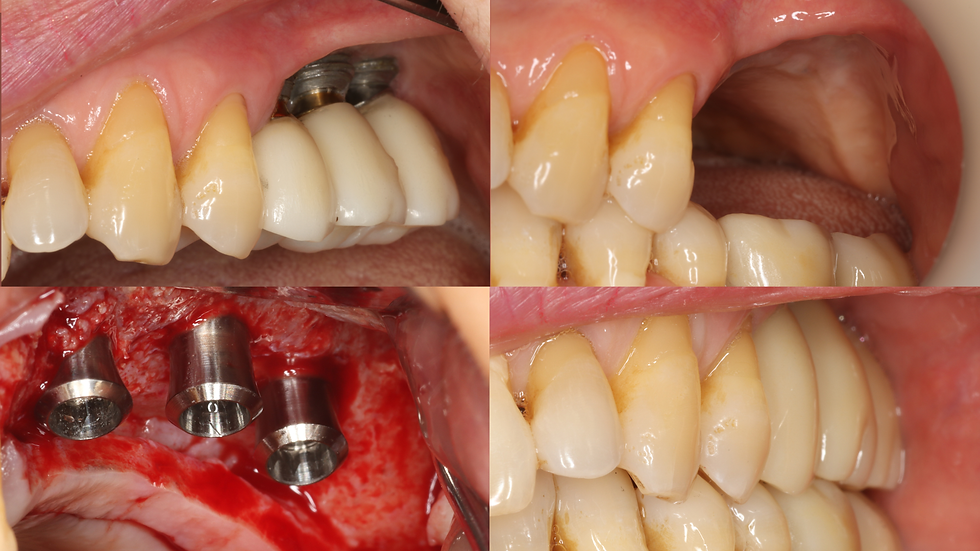Resolving a soft tissue complication in a GBR procedure
- manuel feregrino

- Mar 24, 2020
- 1 min read
Updated: Mar 15, 2022
Patient information 28 years old male patient without systemic disease, he lost his upper lateral incisal 2 years ago in a car accident.
Pre-operative CT and clinical view of #21 Previous CT scan where we have 3.27mm crestal bone width, not enough for implant placement on the upper right lateral incisor.






The treatment plan was a simultaneous IS-II implant placement with a Guided Bone regeneration with a A3 titanium membrane and a xenograft, covered by membranes by Plasma Rich in Growth Factors.

4 months later, the patient presented a soft tissue fenestration with a titanium membrane exposure.

At the time of membrane removal, we found good bone volume enough to continue with the procedure.



In order to resolve the soft tissue defect and prevent a bone infection, we opened the flap then removed the titanium membrane and we took a connective tissue graft from palate.

Placement of connective tissue graft under the flap in order to cover the bone and fill the holes left by the soft tissue fenestration.

Implant stability of 73 checked by Any Check at the time of membrane removal and implant uncovering.

One week healing

One month healing



6 months follow-up after restoration

6 months follow-up after restoration, where we can see the new bone regeneration from 3 mm to 6.9 mm width
Conclusion Even with a soft tissue complication, the GBR is a predictable procedure if we know how to resolve it.



Comments